Hi,
I have the following configuration:
- Victron Energy Multiplus 12/800/35-16
- Two Omnipower OPR120-12, 12V 120Ah Deep Cycle AGM/Gel Hybrid VRLA Batteries (connected in parallel)
I use the system for my desktop and TV set during power outages, they are quite common where I live. I have specced the system to last at least 2 hours as that's usually how long our power outages last. The average power draw for my desktop and Tv set fluctuates from 260W to about 310W. I use the Victron MK3-USB interface on my laptop to monitor the system.
The problem that I have been having is the voltage dips very quickly under this power draw, it typically starts at around 13.5V-13.7V (Float Voltage) and within 20min falls to 11.5V. I have my shut-off setting set for 11.5V but I know the minimum voltage for these batteries is 10.5V. At 11.5V the State of Charge according to the Victron App is still 97%.
The only thing I can think is wrong is one of my settings have to be wrong? I have added screenshots below of all my settings. Any advice will be greatly appreciated.
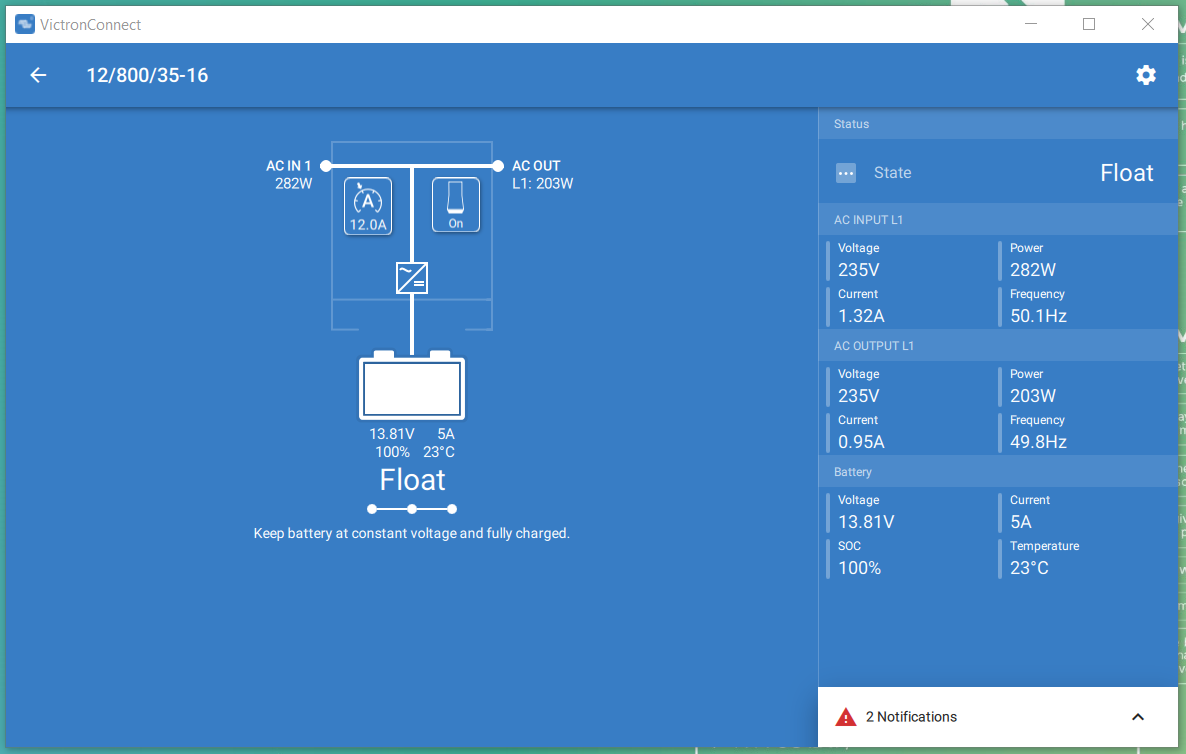

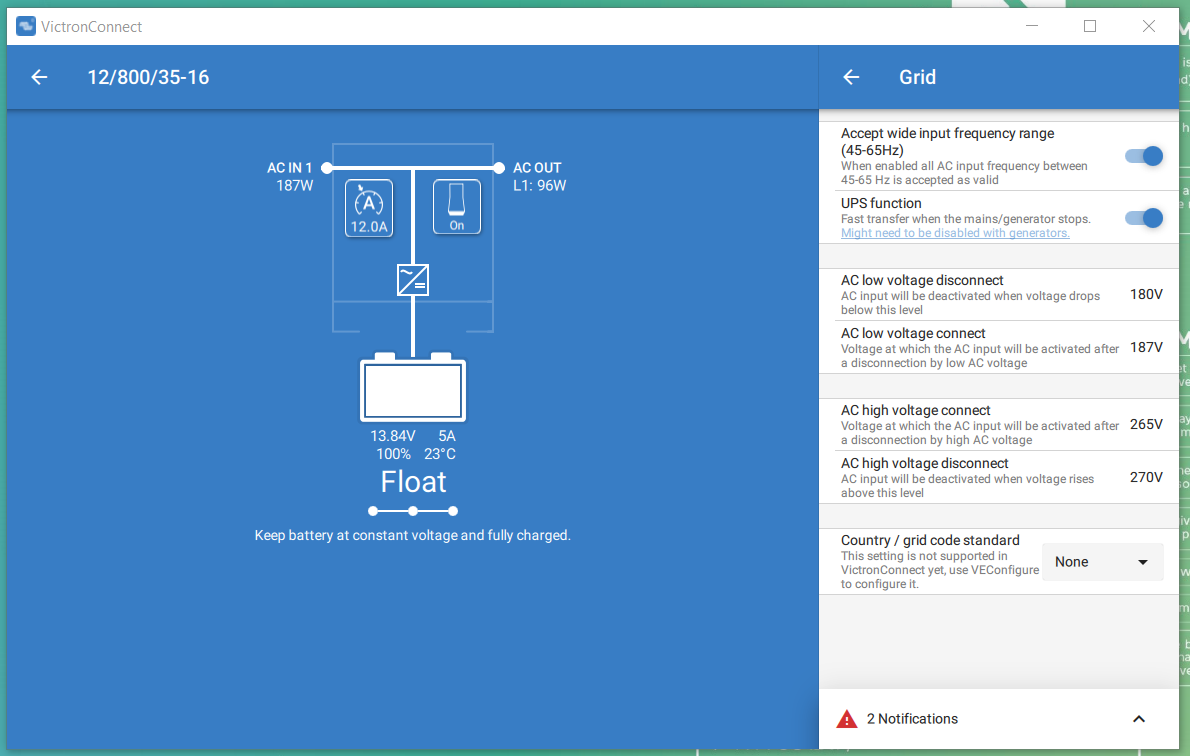
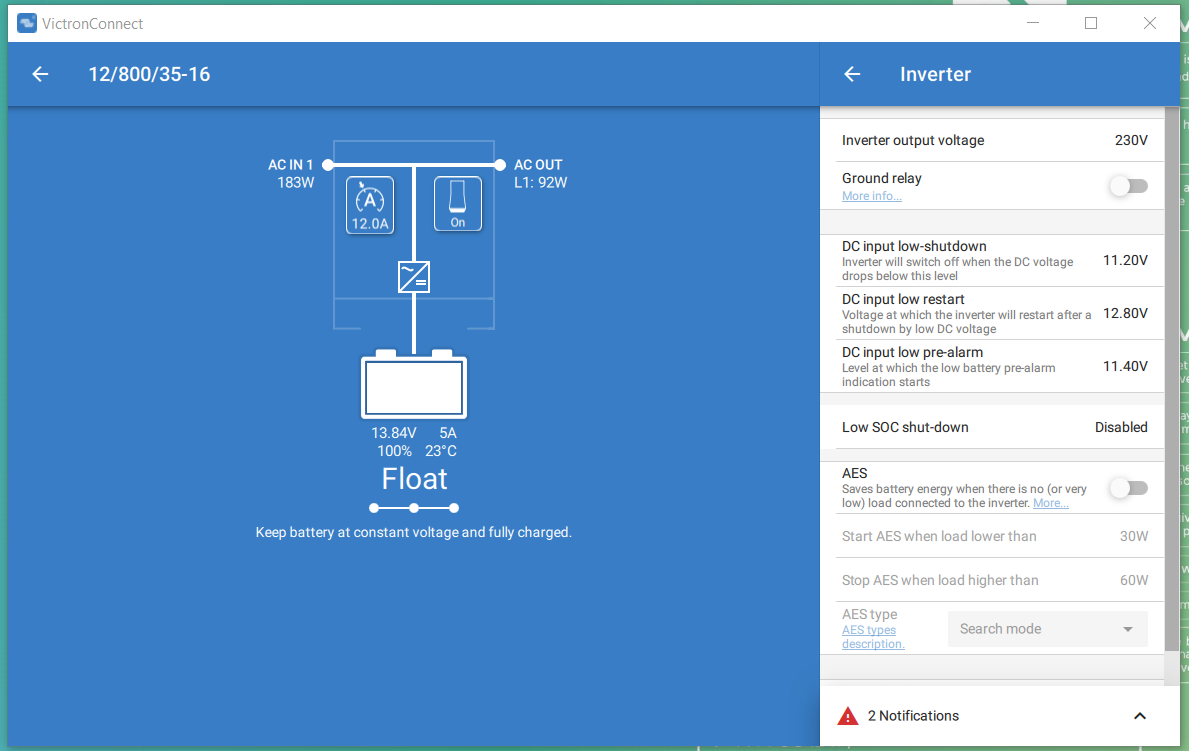
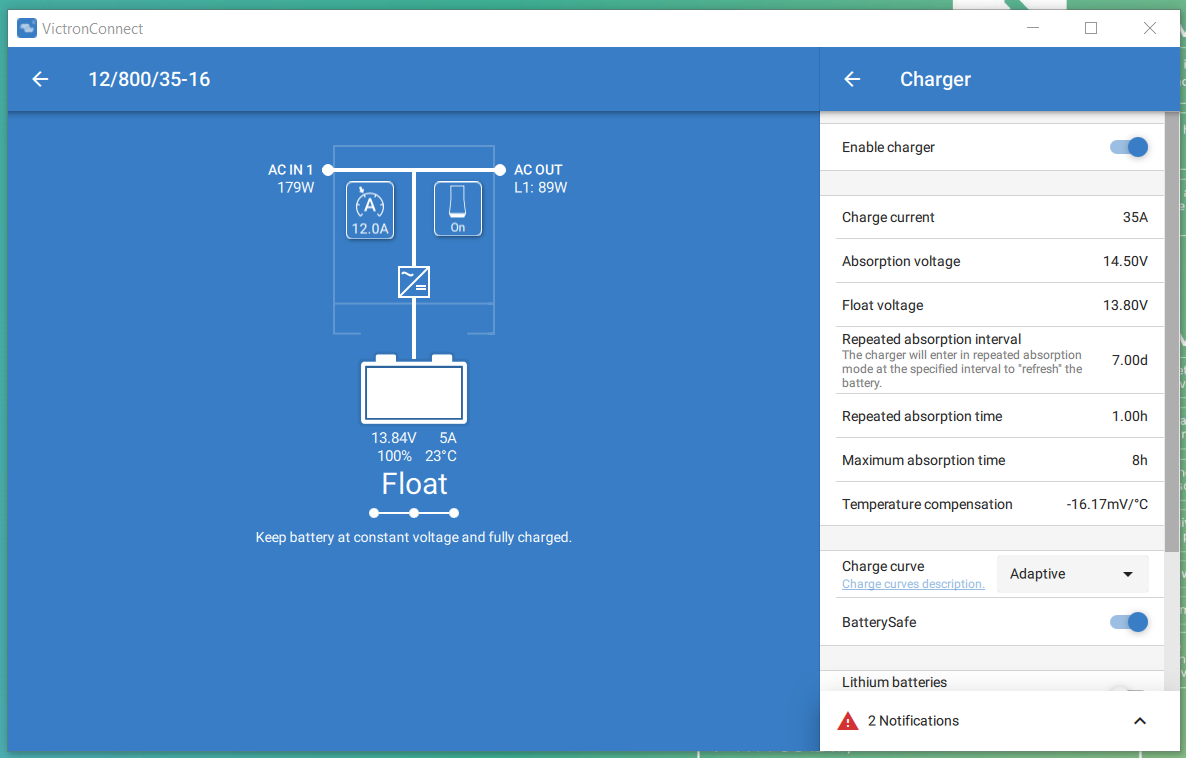
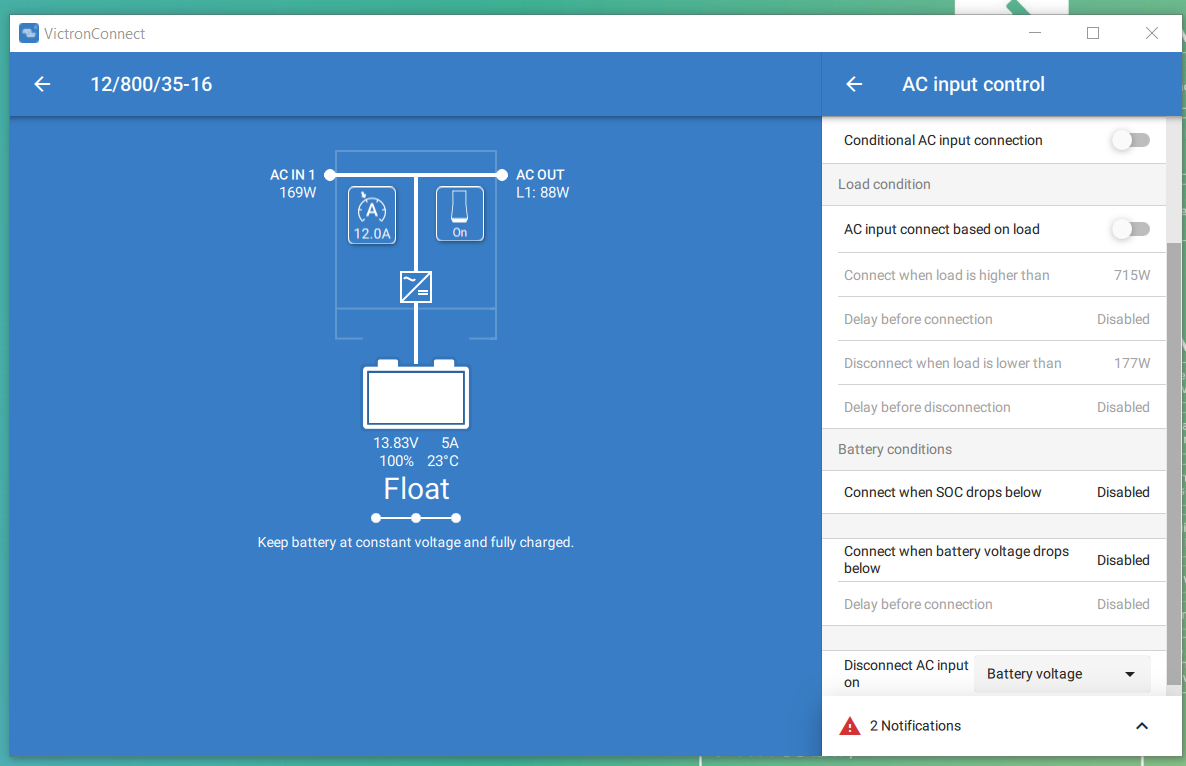
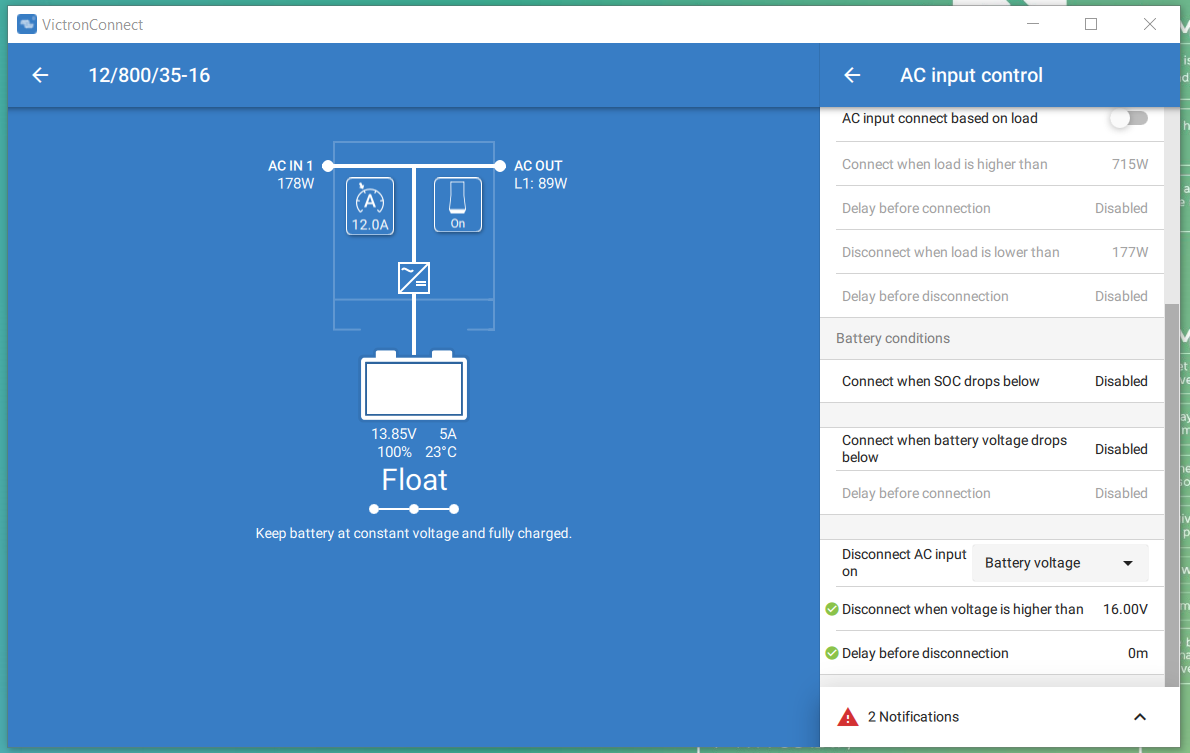
Thanks again!
